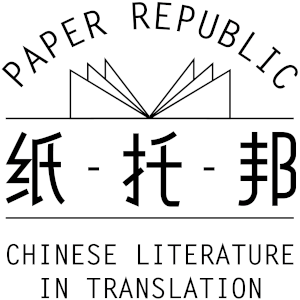Murakami Haruki’s latest novel, his first major release since the 1Q84 trilogy in April 2010, goes on sale in Japan April 12. I haven’t found any hint of its name in English, but according to a report by Shi Chenlu at Chinanews.com (村上春树新长篇) , its (temporary) Chinese title is <没有色彩的多崎造和他的巡礼之年>.
Intriguingly, now the hunt is on for the Chinese translator. You may recall that the monopoly of long-time Murakami translator Lin Shaohua (林少华) ended abruptly when the contract for rendering What I Talk about When I Talk about Running was handed over to Shi Xiaowei (当我谈跑步时我谈些什么,施小炜译).
But Shi Xiaowei’s time in the spotlight may have been short-lived. Shi Chenlu reports that Mao Danqing (毛丹青) has tweeted that he is being headhunted for this new assignment. Mao is an accomplished writer and translator who actually lives in Japan, so it’s unlikely he’s in the running simply because he might be less costly than his predecessors.
Considering that for more than a decade Lin Shaohua virtually was Murakami Haruki to tens of thousands of Chinese readers, this points to an interesting phenomenon: China publishers are beginning to experiment with new “brands” for translated literature. Could it be that they have (finally) realized that different types of writing—even from the same author—require different types of “packaging”?
At any rate, the marketing of the China translator has definitely taken off, as vividly shown by the recent brouhaha over Li Jihong (李继宏) and his series of translations of old favorites such as Le Petit Prince, The Great Gatsby and The Old Man and the Sea. His publisher’s advertising campaign trumpeted that these are the “finest translations [of these classics] to date,” a claim that riled academics and netizens alike. Regardless of your opinion, this hype won the launch of Li Jihong’s “series” a huge amount of free word-of-mouth advertising and arguably established his brand in the marketplace in a very short period of time. In an e-mail message to me today, he says that his Le Petit Prince (小王子) and The Old Man and the Sea (老人与海) are now in their third print run with total output for each totaling 50,000 copies.
Meanwhile, the German literaturkritiker that fans of Chinese fiction love to hate, Wolfgang Kubin, has weighed in with a timely comment about the best-known brand in the Chinese-to-English translated literature market: Howard Goldblatt.
Says Kubin about Goldblatt’s rendering of Wolf Totem (两个作者): “Early on someone in Germany translated this novel, but because it touched on some ideas that Germans would have difficulty accepting, no German publisher published it. But when Goldblatt’s English version was released, one German publisher took a look and discovered that Goldblatt had deleted all the problematic text. Then they published a German translation based on the English version, and it sold fairly well. So in a certain sense, I believe that Mo Yan’s English novels should be seen as having two authors—one is Mo Yan, and one is Howard Goldblatt.”
Of course, how a translator translates is important, but positioning-wise—we are talking about branding here—what s/he translates is also telling. Nicky Harman has just signed to put Chan Koonchung’s controversial new novel, <裸命> (The Unbearable Dreamworld of Champa the Driver), into English for Transworld Publishing. Harman is a professional literary translator with a long list of distinguished works to her name as you can see here. This novel about a Tibetan who chauffeurs by day but services his Han boss in bed at night features fairly risqué scenes and raunchy language, at least at the beginning of the tale.
But re-creating naughty scenes in another tongue isn’t necessarily a bad thing in the branding game. Translating Shanghai Baby—dissed as "garbage" by some—definitely helped when it came to being shortlisted for rendering Chi Zijian’s novel about the reindeer-herding Evenki, Last Quarter of the Moon. Partly because it established me as a published writer, and partly, I suppose, because the ability to portray sexual intimacy movingly is a serviceable skill.


Comments
As I'm sure you know by now, the book is called "Colorless Tsukuru Tazaki and His Years of Pilgrimage". I got the book in Japanese right after it was published, and interestingly, the English title is printed on book jacket, on the bottom right. Under the jacket, on the hard cover itself, is ONLY the English title. The Japanese title is only on the spine!
I wonder if Murakami came up with the English title himself?
Kieran Maynard, May 20, 2014, 7:09p.m.